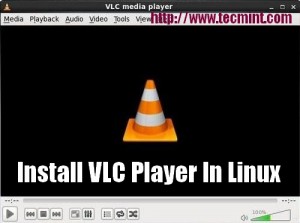Media Player For Fedora 15

You are logged in as. Please submit your review for VLC Media Player for openSUSE 32-bit.
VLC is the videolan project s media player. it plays mpeg, mpeg-2, mpeg-4, divx, mov, wmv, quicktime, webm, flac, mp3, ogg/vorbis files, dvds, vcds, podcasts, and multimedia streams from various network sources. VLC can also be used as a streaming server that duplicates the stream it reads and multicasts them through the network to other clients, or serves them through http. VLC has support for on-the-fly transcoding of audio and video formats, either for broadcasting purposes or for movie format transformations. support for most output methods is provided by this package, but features can be added by installing additional audio plugins vlc-plugin-pulse, vlc-plugin-sdl or video plugins vlc-plugin-sdl, vlc-plugin-ggi, vlc-plugin-svgalib. there is also a web browser plugin in the mozilla-plugin-vlc package.
Here is the tutorial about installing VLC Media Player on Fedora 15 and Fedora 16. Check out the New Features in VLC Media Player.
Open Terminal Applications – System Tools – Terminal.
Switch to root user.
Add repository.
root geeksite / rpm -Uvh
Install VLC mediaplayer.
root geeksite / yum install vlc
Install Mozilla Plugin Optional.
root geeksite / yum install mozilla-vlc
Start VLC Media Player. Note: root user not allowed to run VLC Media Player But you can still enable root user to run VLC Media Player.
Screen Shot of VLC mediaplayer running on Fedora 16.
That s all.

VLC VideoLAN Client is an open source and free simple fast and much powerful cross-platform player and framework for playing most of multimedia files like CD, DVD, VCD, Audio CD and other various supported streaming media protocols.
It was written by the VideoLAN project and can be available for all operating platforms such as Windows, Linux, Solaris, OS X, Android, iOS and other supported operating systems.
Install VLC Player in RHEL/ CentOS / Fedora
It also has compression feature for many audio and video files and ability to stream media files over computer network. For more information and features can be found at
In this new series of Linux Players, we will show you how to install latest version of VLC Media Player in RHEL 6.3/6.2/6.1/6/5.8/5.6, CentOS 6.3/6.2/6.1/6/5.8/5.6 and Fedora 17,16,15,14,13,12 systems using third party repositories with Yum automated package installer.
Install EPEL, Remi and RPMFusion Repositories in RHEL/CentOS/Fedora
VLC program doesn t included in the Linux operating systems, we need to install it using third party repositories like Epel, Remi and RPMFusion. With the help of these repositories we can install list of all updated packages automatically using YUM package manager tool.
Installing EPEL Remi Repository in RHEL/CentOS
First, install Epel and Remi repository for your Linux OS distribution using following links. Please select and install it according to your Linux supported system versions.
For RHEL/CentOS 6.3/6.2/6.1/6.0
yum localinstall --nogpgcheck
Installing RPMFusion Repository in RHEL/CentOS/Fedora
You also need to install RPMFusion repository too, under your Linux system. So, please choose and install as per your system supported version.
For Fedora 17/16/15/14/13/12
Check the Availability of VLC in RHEL/CentOS/Fedora
Once you ve all the repositories installed on your system, do the following command to check the availability of VLC player.
yum --enablerepo remi-test info vlc
Under Fedora 17/16/15/14/13/12
yum --enablerepo remi info vlc
Sample Output :
Loaded plugins: fastestmirror, refresh-packagekit
Loading mirror speeds from cached hostfile
Available Packages
Name : vlc
Arch : i686
Version : 2.0.3
Release : 1.el6
Size : 1.9 M
Repo : rpmfusion-free-updates
Summary : The cross-platform open-source multimedia framework, player and server
URL :
License : GPLv2
Description : VLC media player is a highly portable multimedia player and multimedia framework
: capable of reading most audio and video formats as well as DVDs, Audio CDs VCDs,
: and various streaming protocols.
: It can also be used as a media converter or a server to stream in uni-cast or
: multi-cast in IPv4 or IPv6 on networks.
Installing VLC Player in RHEL/CentOS/Fedora
As you see the VLC player is available, so install it by running the following command on the terminal.
yum --enablerepo remi-test install vlc
yum --enablerepo remi install vlc
Starting VLC Player in RHEL/CentOS/Fedora
Run the following command from the Desktop terminal as normal user to Launch the VLC player. Note : VLC is not supposed to be run as root user.
VLC Player Preview
See the preview of VLC Player under my CentOS 6.3 system.
Updating VLC Player in RHEL/CentOS/Fedora
If you would like to Update or Upgrade VLC player to latest stable version, use the following command.
yum --enablerepo remi-test update vlc
yum --enablerepo remi update vlc.
Download Audacious Source code. The Audacious source is split into two packages. The audacious package needs to be installed before audacious-plugins.
The latest version available is Plex Media Server 0.9.8.6, which has been released 2 days ago. In this article I will show you how to install Plex Media Server 0.9.8.
In this new series of Linux players, we will show you how to install latest version of VLC Media Player in RHEL 6.3/6.2/6.1/6/5.8/5.6, CentOS.
Mar 11, 2013 Use full-screen and HD resolution for best quality of video. ---commands and links used in this video--- 0. Must be root user. command: su root pass 1.
Official page for VLC media player, the Open Source video framework.